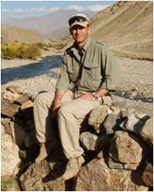In the
last edition of my column at
Foreign Policy I discussed how Israel's messy campaign against Hezbollah in 2006 has become the focus of the Pentagon's policy shop. The accepted wisdom inside OSD, Joint Forces Command, and elsewhere is that Hezbollah's use of hybrid warfare" should now be the prototype for which U.S. forces should prepare.
I suggest that the U.S. government's abortive dealings with Somalia since 1992 merit equally intense study.
Last Thursday Stephanie McCrummen, a Washington Post reporter who has covered Somalia and east Africa for many years, revealed that the U.S. government is now supplying weapons and ammunition to Somalia's government (such as it is) in an attempt to thwart a takeover by Islamist rebels with alleged ties to al Qaeda. Her source was an anonymous U.S. official who seemed cleared to discuss this on background.
Since 1992, the U.S. government has tried nearly the full range of policy options in an attempt to prevent Somalia from becoming what Afghanistan became between 1996 and 2001. During that span, the U.S.:
1) Mounted a division/MEF-sized humanitarian intervention,
2) Supported a large-scale armed UN relief mission,
3) Conducted a robust SOF-led direct action raiding campaign,
4) Attempted a policy of sustained benign neglect,
5) Covertly supported certain Somali warlords to hunt down suspected al Qaeda affiliates,
6) Mounted an ISR and air strike campaign against al Qaeda suspects,
7) Supported a proxy conventional campaign into Somalia by the Ethiopian army,
8) And now is attempting a foreign internal defense arm-and-equip strategy.
None of these approaches has yet to establish stable governance in Somalia. A manpower-intensive U.S.-led counterinsurgency campaign in Somalia is out of the question. With the toolbox seemingly empty, the U.S. government now fears that the local al Qaeda affiliates will strengthen and that al Qaeda central" figures now in tribal Pakistan could displace to a new sanctuary in Somalia.
The scope and scale of the Somalia problem extends beyond intelligence agency covert action. Other ungoverned spaces will also require the involvement of U.S. military resources and thus supporting doctrine and strategy from the Pentagon policy office.
Ungoverned spaces and the Somalia prototype" circle back to the U.S. campaign in Afghanistan. U.S. policymakers would no doubt be ecstatic if Afghanistan would transition to another Colombia: a strengthening central government with improving security forces, making progress against an insurgency with the assistance of a very small U.S. advisory team.
But the darker outcome for Afghanistan also looms, the Somalia prototype. This could occur after the U.S. public becomes exhausted with the current effort and after Afghanistan's central government fails to come together. The Pentagon would then have to create a new doctrine, how to manage a post-COIN" conflict.
The Pentagon is right to study Israel's hybrid war against Hezbollah. But it should also give equal attention to America's own flailing history in Somalia. During that time a long list of strategies has failed to achieve the U.S. government's security goals. What the OSD policy office learns from that and what lessons it may need to apply someday to Afghanistan or ungoverned spaces elsewhere seems just as timely as hybrid warfare.

